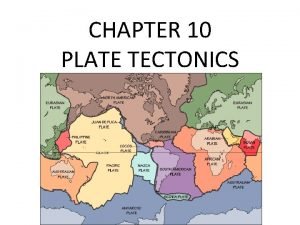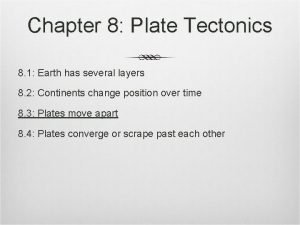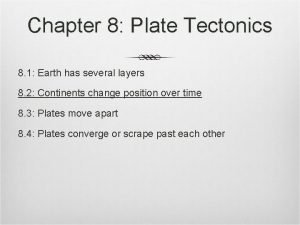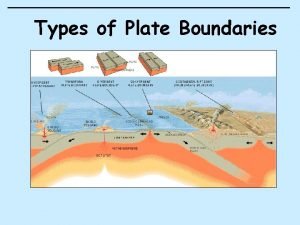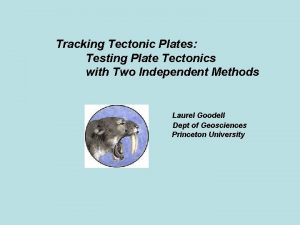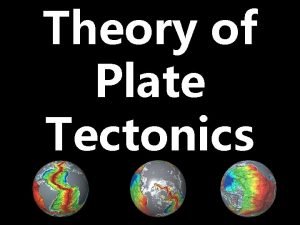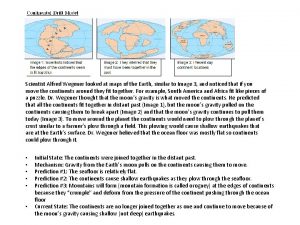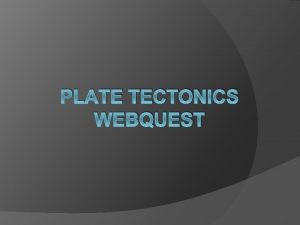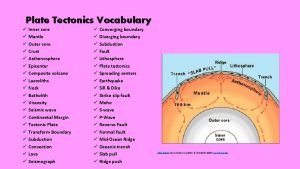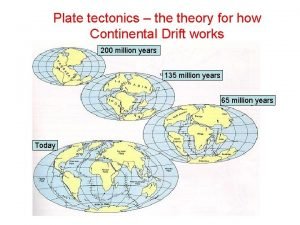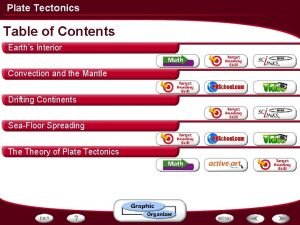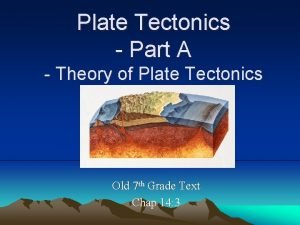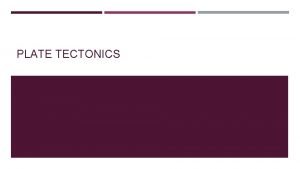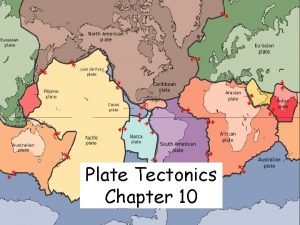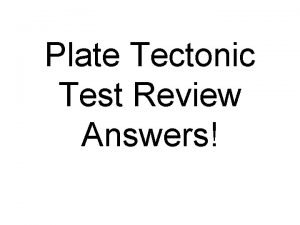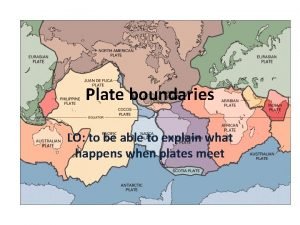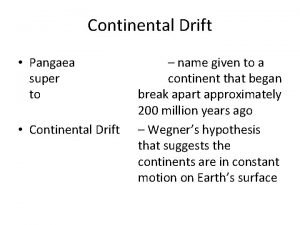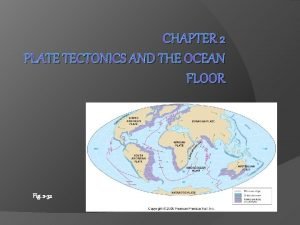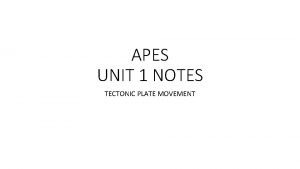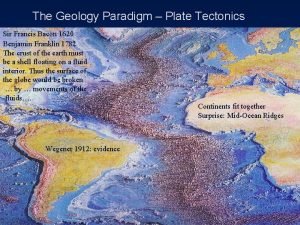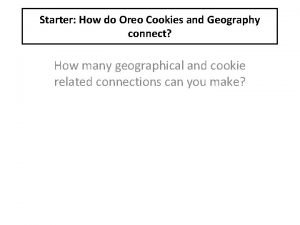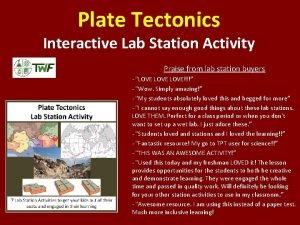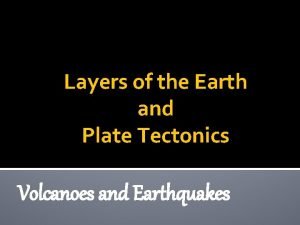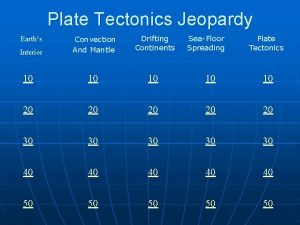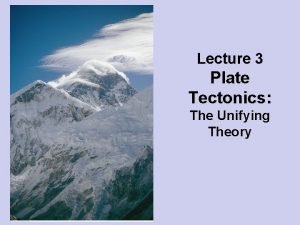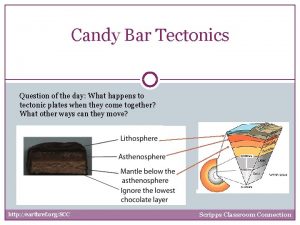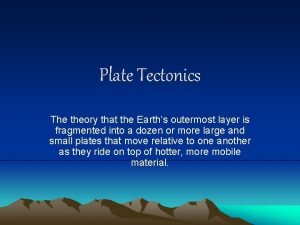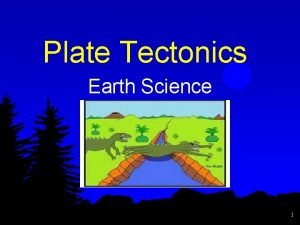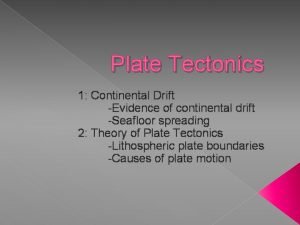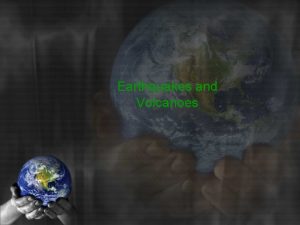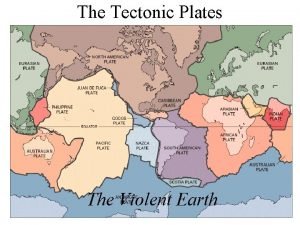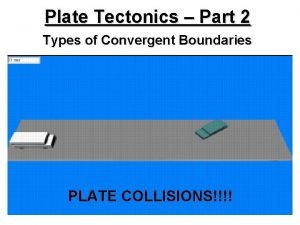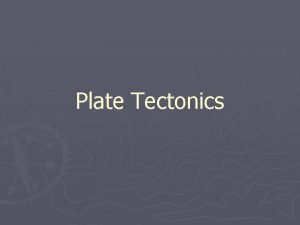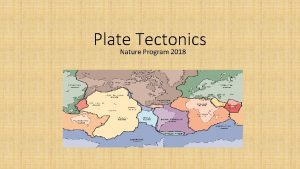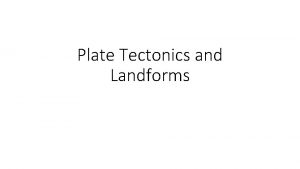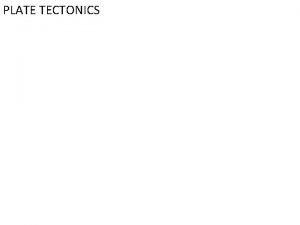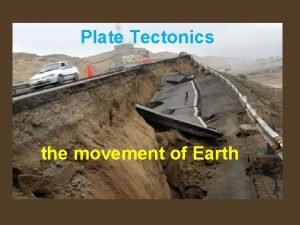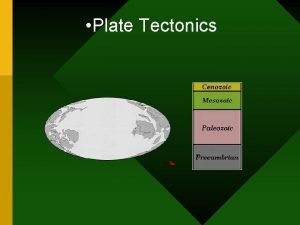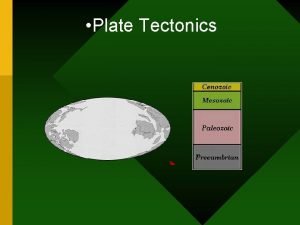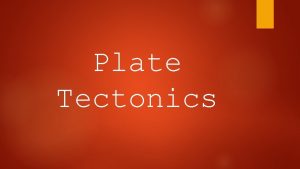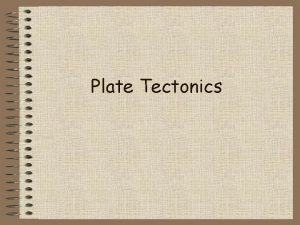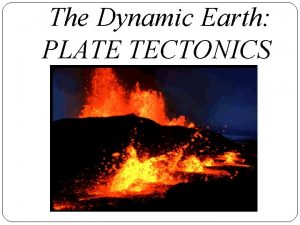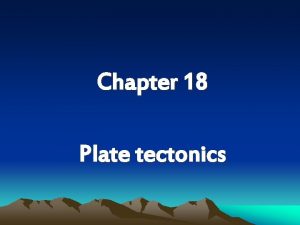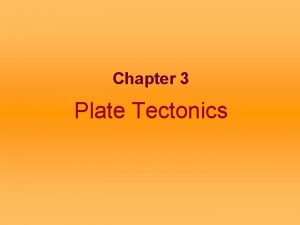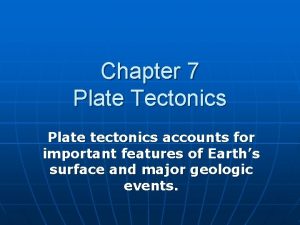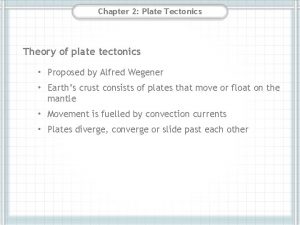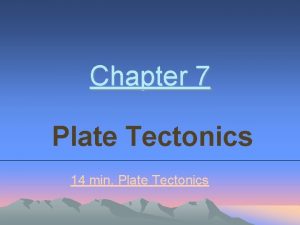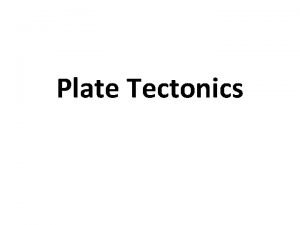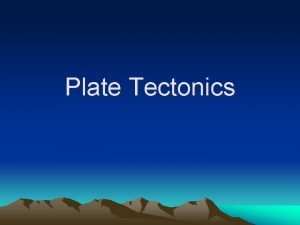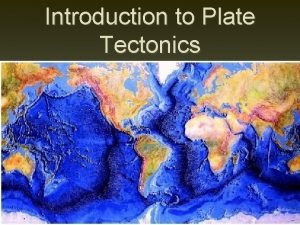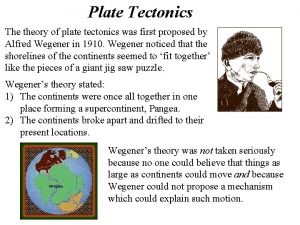Chapter 5 The Dynamic Earth Plate Tectonics Produced







































- Slides: 39

Chapter 5 The Dynamic Earth – Plate Tectonics Produced by Dr. William Deane – U of T, Knoxville

Why? Why is Mount Everest 29, 035 feet (8850 meters) high?

Why? Why do we have deep ocean trenches?

Dynamic Earth Because the Earth is a dynamic planet Historically, over long geologic time periods, the Earth has under gone tremendous change It turns out that the outer crust of the Earth is composed of about 20 distinct “plates”, which move relative to each other

Plate Tectonics Plate tectonics is the unifying concept of the Earth sciences Plate tectonics explains: Volcanoes Earthquakes Mountain chains Sea floor spreading Deep ocean trenches Occurrence of same fossils on different continents

Accumulating Evidence Fossil record Magnetism and the Earth’s magnetic field Paleomagnetism Magnetic reversals The topography of the seafloor Age of the seafloor Seafloor spreading

Fossil Record The fossil record had revealed that the geology and paleontology match on opposite sides of the Atlantic Ocean

Fossil Record In fact, there are matching fossil records that span across all of the continents Without plate tectonics, this is hard to explain

Topography of the Atlantic Also, in the 1950 s, it was discovered that an underwater mountain range ran north-south in the middle of the Atlantic Ocean The Mid-Atlantic Ridge rises as high as 2 kilometers above the abyssal plain

Seafloor Spreading By 1962, Harry Hess at Princeton University and a Naval Reserve Rear Admiral, and Robert S. Dietz had coined the term “seafloor spreading” And in 1963, the team of F. J. Vine and D. H. Matthews (and independently L. W. Morley) proposed that seafloor spreading could explain the observed magnetic reversal striping on the Atlantic and Pacific seafloors

Seafloor Spreading The Mid-Atlantic Ridge is a great fault zone where hot magma rises up, cools and solidifies, forming new basalt

Seafloor Spreading The iron minerals in the basalt become magnetized in the prevailing direction of the Earth’s magnetic field

Seafloor Spreading Mid-oceanic ridges and seafloor spreading was found to occur in all the oceans on Earth

Plates that Move In 1965 Wilson proposed the concept that the crust of the Earth is a mosaic of interacting plates – hence “plate tectonics” These plates move relative to each other The continents ride on these plates Geologic features, such as mountains, volcanoes and earthquakes occur along the plate boundaries

Plates that Move Note that we are on the North American Plate

3 Types of Plate Boundaries In 1965, the Canadian Geologist, J. Tuzo Wilson, proposes that tectonic plates interact in three different ways along their boundaries 1. Transform 2. Divergent 3. Convergent

Divergent Plate Boundaries Usually start within continents Can grow to become ocean basin

Divergent Plate Boundaries New oceans are slowly created over millions and tens of millions of years along divergent plate boundaries

Divergent Plate Boundaries Rifting occurs where tensional forces thin the crust, magma ascends and volcanoes form The crust is pulled apart, forming a valley

Divergent Plate Boundaries As spreading continues, a long, narrow sea can form when ocean water slowly floods the valley Eventually, an expansive ocean basin and ridge are created

Divergent Plate Boundaries Can see the spreading on the island of Iceland, which sits on top of the mid-Atlantic Ridge

A Future Ocean? This rifting started about 20 million years ago It is at the junction of three plates that are all pulling away from each other The Red Sea formed about 5 million years ago along a rift

Convergent Boundaries There are three types of convergent plate boundaries Oceanic–Oceanic Japanese Islands Oceanic–Continent Andes Mountains Continent–Continent Himalaya Mountains We will look at each type

Oceanic - Oceanic Under the ocean, one plate slides underneath another at a subduction zone

Oceanic - Oceanic A deep trench forms along the contact

Why? Because deep trenches form where an oceanic plate is being subducted under a continental plate

Oceanic - Oceanic Magma wells up along the subduction zone creating volcanoes, which can form volcanic island arcs such as the Japanese Islands

Oceanic - Continent An oceanic plate slides under a continental plate at a subduction zone

Oceanic - Continent The relative densities of the oceanic crust versus the continental crust are important: The continental crust is lighter and has an average density of 2. 8 g/cm 3 The oceanic crust is heavier and has an average density 3. 2 g/cm 3 Therefore, the heavier oceanic crust sinks beneath the more buoyant, lighter continental crust

Oceanic - Continent A deep trench forms along the subduction zone

Oceanic - Continent The lighter continental crust is pushed up and forms a mountain range

Oceanic - Continent Magma wells up along the subduction zone creating volcanoes, which adds to the size of the mountains and creates a continental volcanic arc

Andes Mountains The Andes Mountains stretch over 5500 miles along the Pacific side of South America

When Continents Collide When two continental plates collide, one does not sink beneath the other Rather they smash together The continental crust is deformed and uplifted, creating mountains such as Mount Everest

Why? Why is Mount Everest 29, 035 feet (8850 meters) high? Because the continent of India collided with the continent of Asia

Continent - Continent

Transform Plate Boundaries A transform fault plate boundary occurs when two plate slide past each other in opposite directions

Transform Plate Boundaries The most famous example is the San Andreas Fault Zone in California The portion of California in blue is heading northwest to Alaska This is the most studied fault zone in the world

San Andreas Fault Earthquakes Each red dot marks an earthquake Notice how many have occurred in California They are not kidding when they talk about the “BIG ONE”
 Fossils as evidence of continental drift
Fossils as evidence of continental drift Chapter 8 plate tectonics
Chapter 8 plate tectonics Chapter 8 plate tectonics
Chapter 8 plate tectonics Plate tectonics vs continental drift
Plate tectonics vs continental drift What are the four types of plate boundaries
What are the four types of plate boundaries Plate motion calculator
Plate motion calculator Plate tectonics theory states that
Plate tectonics theory states that Plate tectonics vs continental drift
Plate tectonics vs continental drift Compare continental drift and plate tectonics
Compare continental drift and plate tectonics Plate tectonics webquest pdf
Plate tectonics webquest pdf Plate tectonics vocabulary
Plate tectonics vocabulary Rodinia
Rodinia Seafloor spreading material at trenches
Seafloor spreading material at trenches Plate tectonics definition
Plate tectonics definition Driving force of plate tectonics
Driving force of plate tectonics Plate boundaries
Plate boundaries Summarize the theory of plate tectonics
Summarize the theory of plate tectonics Arthur holmes contribution to plate tectonics
Arthur holmes contribution to plate tectonics Continental drift vs plate tectonics
Continental drift vs plate tectonics Mantle magma
Mantle magma Constructive plate boundary diagram
Constructive plate boundary diagram Edible plate boundaries
Edible plate boundaries A plate tectonics puzzle worksheet answer key
A plate tectonics puzzle worksheet answer key The ocean floor revealing plate tectonics
The ocean floor revealing plate tectonics Plate boundaries apes
Plate boundaries apes Francis bacon plate tectonics
Francis bacon plate tectonics Oreo cookies plate tectonics
Oreo cookies plate tectonics Plate tectonics interactive lab
Plate tectonics interactive lab Convergent plate boundary
Convergent plate boundary Oreo plate tectonics
Oreo plate tectonics Types of volcanoes
Types of volcanoes Plate tectonics game board
Plate tectonics game board Types of plate boundaries
Types of plate boundaries Candy bar plate tectonics
Candy bar plate tectonics Plate tectonics
Plate tectonics Tectonic plates
Tectonic plates Plate tectonics
Plate tectonics Plate tectonics
Plate tectonics San andreas fault map
San andreas fault map Boundaries of plate tectonics
Boundaries of plate tectonics
